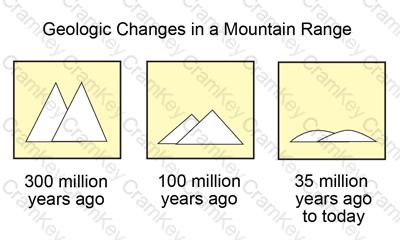GED Science Exam
Last Update Mar 12, 2025
Total Questions : 300
To help you prepare for the GED-Science GED exam, we are offering free GED-Science GED exam questions. All you need to do is sign up, provide your details, and prepare with the free GED-Science practice questions. Once you have done that, you will have access to the entire pool of GED Science Exam GED-Science test questions which will help you better prepare for the exam. Additionally, you can also find a range of GED Science Exam resources online to help you better understand the topics covered on the exam, such as GED Science Exam GED-Science video tutorials, blogs, study guides, and more. Additionally, you can also practice with realistic GED GED-Science exam simulations and get feedback on your progress. Finally, you can also share your progress with friends and family and get encouragement and support from them.
Hot vapor from a cup of coffee forms droplets of liquid when the vapor passes over a cool spoon.
This condensation action is similar to which of the following?
Exhibit:

Profiles (side views) can be used to tell the geologic changes in mountain ranges.
Which characteristic of the three profiles shown at the left is most useful in arranging them according to age?
Many years ago, beavers were introduced to a region of California that they had not previously inhabited. Forty years later, the beaver population had grown so much that a cluster of aspen trees used by the beavers for food and building materials inside the national forest became endangered. The beavers were also interfering with the water systems.
In retrospect, how would biologists most likely evaluate the impact of the introduction of the beaver?
-- Exhibit --
The carbon cycle is illustrated above. Two of the essential processes involved are photosynthesis in green plants and algae and respiration by almost all organisms. Respiration, as well as burning and other natural decomposition (breakdown) processes, contributes to the amount of CO2 in the air and soil. Photosynthesis uses up CO2 and produces O2, which, in turn, is used up in respiration and the burning of fossil fuels such as coal, oil, and gas.

-- Exhibit --
Based on the information and diagram, which process does not release CO2?